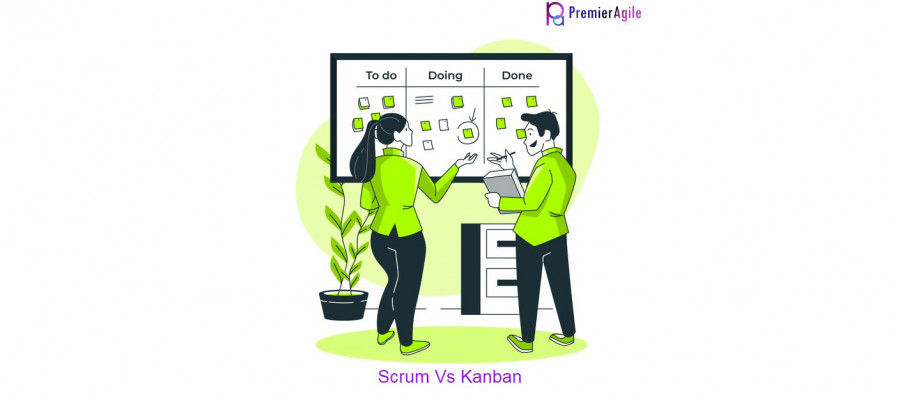Difference between Scrum and Kanban

Introduction
In a world that is getting way competitive and cut-throat, organizations understand the importance of adopting Agile practices. Kanban and Scrum are two separate frameworks that Agile organizations use. Talking about Kanban vs Scrum it is essential to mention that both the practices have the same goal-to help software developer's deliver business value with reduced wastes.
Kanban was developed as a visual management tool that helps teams to prioritize tasks so that these can be completed first thereby limiting work-in-progress. The emphasis is to get the work done fast and with maximized efficiency. It is the Kanban board that is at the center of giving project teams that extra element of visibility to their project.
Scrum, is a work method that is iterative and incremental. The work consists of short Sprints which are no longer than a month, at the most. Within each Sprint, there are processes, events, roles, and artifacts to deliver working software that is aligned with customer feedback.
Using these terms interchangeably though is incorrect because even if essentially both the Agile practices help in breaking down complex tasks for optimizing work and processes, there are key differences between Scrum and Kanban, on the philosophy as well as the practical applicability of both practices.
Kanban vs Scrum
Characteristics | Kanban | Scrum |
| Methodology |
|
|
| Roles & Responsibilities |
|
|
| Scrum Board vs Kanban Board |
|
|
| Key Metrics | Measurement is done based on cycle time which is the time taken to complete a project | Measurement of productivity is based on the velocity or speed of Sprints. |
| Usefulness |
|
|
Conclusion:
Knowing the differences between Scrum and Kanban is important to decide which framework should go ahead with and get trained on. Both frameworks have proven results that cannot be denied, and both of these practices are productive.
However, when it comes to choosing between the two, you need to understand that it has to do with your current role, the eligibility criteria of getting trained on these practices, and finally, what your career choice is for the future. For organizations, the decision needs to be based on whether they want quicker results or enhance the overall work process.
To summarize:
- Scrum should be used when timeboxing, continuous feedback, providing early business value etc are of the essence; Kanban should be adopted to enhance the overall production process;
- Scrum should be used for feature-based work that has bigger goals.
- Kanban should be used for small enhancements or work related to fixing bugs and defects.
Having said that, today many Agile organizations use hybrid models, using both Scrum and Kanban; taking the best parts of both the models- the visual board of Kanban with Scrum Agile principles. Organizations today are more flexible when it comes to allowing their software teams to choose between Scrum, Kanban, and/or hybrid.
References:
- https://www.planview.com/resources/guide/introduction-to-kanban/kanban-vs-scrum/
- https://www.cmswire.com/information-management/agile-vs-scrum-vs-kanban-weighing-the-differences/
- https://www.guru99.com/scrum-vs-kanban.html
- https://www.atlassian.com/agile/kanban/kanban-vs-scrum
Useful Links:
Advanced-CSM Training Odense, CSM Online Certification Phoenix, Advanced CSPO Online Certification Chiang Mai, A-CSM Certification Training London, Certified Scrum Master Course Training Baton Rouge, Leading SAFe Certification Course Oklahoma City, Certified Scrum Master Training Spokane, CSPO Certification Hyderabad, Leading SAFe Online Course Jakarta, CSPO Virtual Training Course Melbourne



